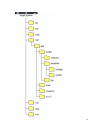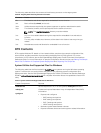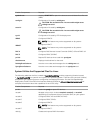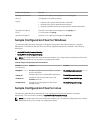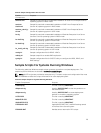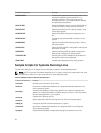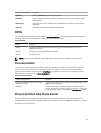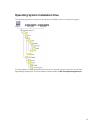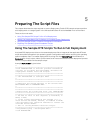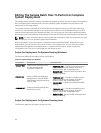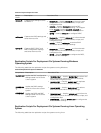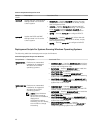
4
Setting Up A Directory Structure For
Deployment
To perform a Deployment ToolKit (DTK)-enabled deployment, you must create a deployment directory
structure on either a network share or your local workstation hard drive. The deployment directory
structure is a central repository for all deployment files that can be used for network deployment and to
build a bootable deployment media. It can also be used successively as a testing space. For a network-
based deployment, you must set up the directory structure on a network volume that is accessible from
your workstation, the source system (to generate configuration information), and the target system (to
deploy).
If you plan to run a scripted deployment from DTK sample scripts, make sure that the DTK files are
correctly structured in the deployment directory. DTK sample scripts use this structure to set the default
paths for deployment. If you make changes to the directory structure, you must also make changes to
the sample scripts.
The deployment directory structure consists of the following files:
• DTK Utilities And Files
• System-Specific Files
• Operating System Installation Files
NOTE: Do not create your DTK directory structure on a NetWare network volume. DTK network-
based deployment is not supported from mapped NetWare systems.
DTK Utilities And Files
All the necessary DTK files are provided as part of the initial installation. It is recommended that you use
the default directory structure created in the initial installation of DTK components. The sample scripts
provided with DTK are set up to use these default paths.
NOTE: If you choose to create a directory structure for DTK components that is different from the
one provided in the initial installation, carefully review and edit each sample script (wherever
necessary) to reflect the different directory structure.
A 32-bit unzip utility is required to create the Dell utility partition. Make sure that you copy this utility to
one of the directories of your Windows PE image, preferably \windows\system32 folder for Windows or /
systems folder for Linux.
System-Specific Files
The directory Toolkit\Systems in systems running Microsoft Windows and /opt/dell/toolkit/systems/
system name in systems running Linux acts as a central repository for all the system-specific deployment
information. On systems running Linux, the /systems folder acts as a repository for the common files
required for the systems. On systems running Windows, you can store all profile configuration files for an
optimally configured Dell PowerEdge R720 in the directory Toolkit\Systems\peR720 as shown in the
33



